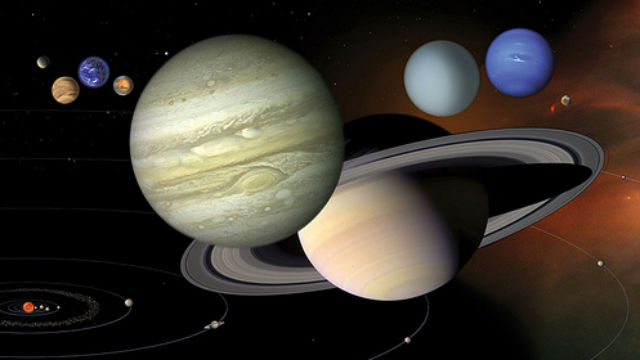The Night the Universe Changed
How a “New Star” appearing in 1572 paved the way for us to truly begin understanding our Universe.
“I conclude, therefore, that this star is not some kind of comet or a fiery meteor… but that it is a star shining in the firmament itself one that has never previously been seen before our time, in any age since the beginning of the world.” -Tycho Brahe
In September of last year, an asteroid struck the Moon, and for eight seconds, a flash of light was seen on the lunar surface that was not only visible to the naked eye, the flash was brighter than all but 50 of the stars viewable to humans in the night sky.
Aside from comets, changes to anything in the night sky that are visible from Earth — not counting atmospheric phenomena like meteors — are an incredibly rare occurrence. It should come as no surprise that the idea that the objects in the sky are not necessarily fixed forever but can change was a challenging one. In particular, the stars were anticipated to be fixed, permanent and forever unchanging. But a fortuitous event centuries ago led us to the inescapable conclusion that even the stars can change.
I want to take you back in history, back to the middle of the 1500s. Night skies were spectacular, even from the world’s most cosmopolitan cities, and thousands of stars consistently graced the sky, sights only visible from a few select locations in the world these days.
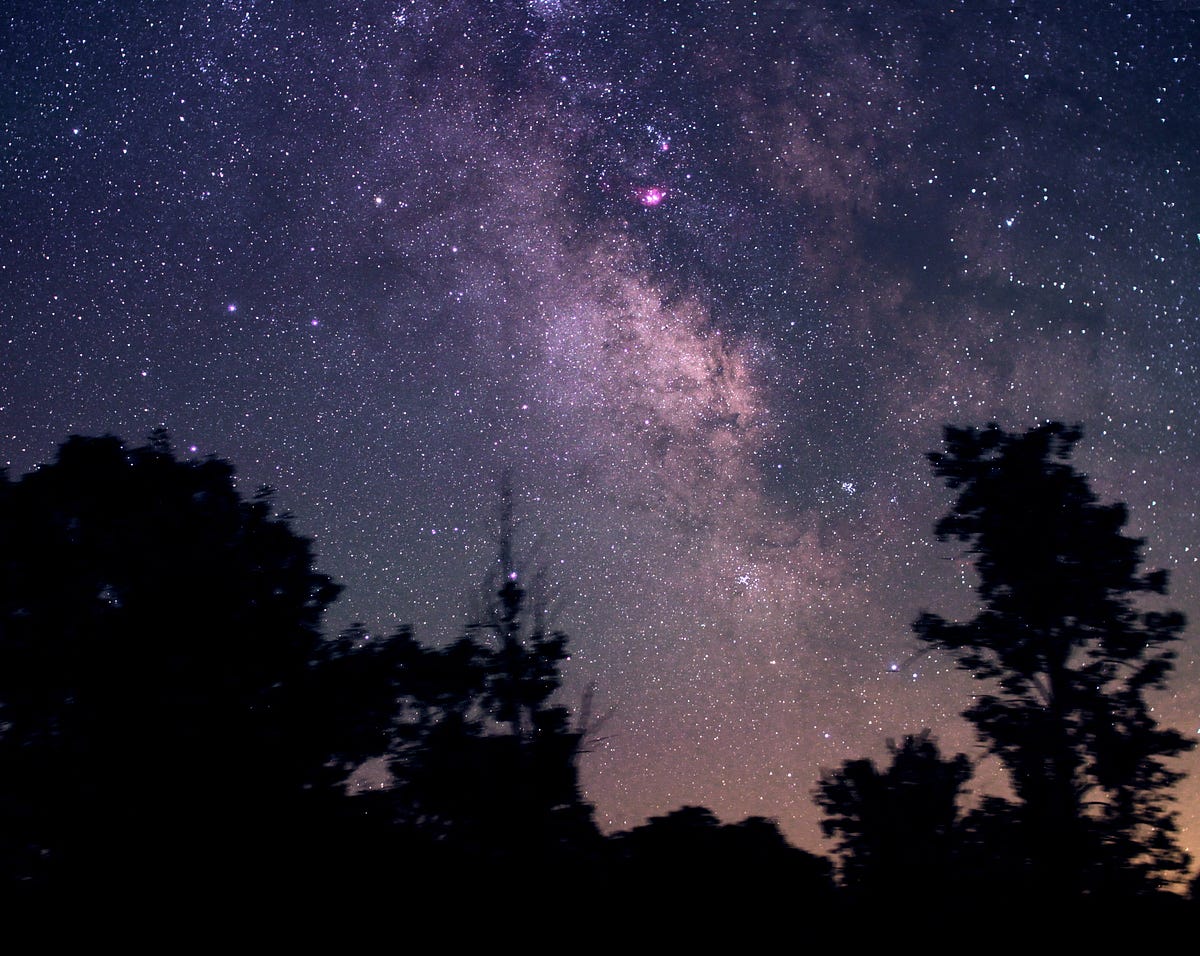
The positions, brightnesses and colors of each hitherto known star in the sky — including all the nebulous and fuzzy objects visible to the naked eye — were unchanged throughout the nights, years and centuries. Only the Moon and the five planets (Mercury, Venus, Mars, Jupiter and Saturn) changed their positions over time, relative to the fixed stellar-and-cosmic backdrop.

The motion of these wanderers through the night sky, along with eclipses and the orbits and appearances of comets, were the primary concerns of astronomers of that time. In particular, Copernicus’ (posthumous) publication of his heliocentric model posed an interesting and controversial alternative to the favored Ptolemaic model, which had stood for more than a millennium.
But on the night of November 6th — some 441 years ago — something changed in the night sky that had never been recorded (in the Western Hemisphere) before: a new star appeared!

Not only did it appear on November 6th, but it continued to brighten, eventually outshining all the other stars and planets in the sky and becoming visible in the daytime, before fading away from view over the span of two years. Tycho Brahe, the greatest naked-eye astronomer of all-time, noticed it that very first night. Looking back on it, he recalled,
When, according to habit, I was contemplating the stars in a clear sky, I noticed a new and unusual star, surpassing the other stars in brilliancy. There had never before been any star in that place in the sky.
He called it a “Stella Nova,” Latin for new star.

For the first time, there was concrete evidence of the following:
- The stars were not fixed, eternal and constant.
- New stars could (apparently) be created. And finally…
- Stars can (apparently) go away, too.
The most eternal things in all of human experience weren’t eternal, after all. And nearly four centuries after Tycho’s supernova first appeared, we discovered it all over again.
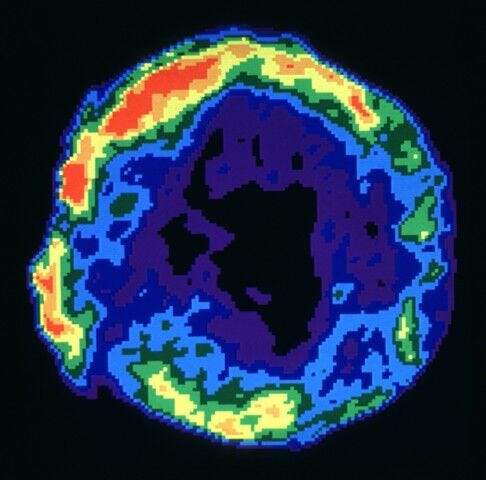
There’s nothing like this in the visible part of the spectrum, of course, but when we turned our eyes towards the sky in radio frequencies (in 1952), the evidence was still there. What we found was a remnant from a long-gone star that had gone supernova some four centuries earlier.
And it isn’t just in the radio that the evidence shows itself.
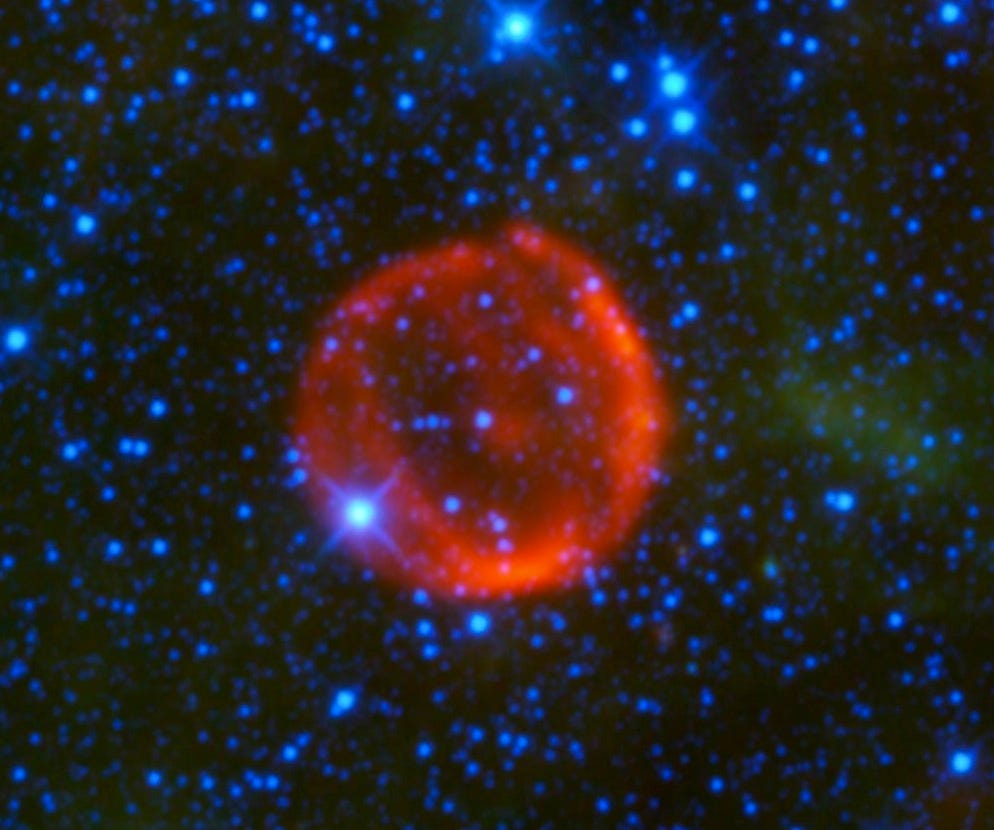
In the far infrared, the warm gas blown spherically outward from this catastrophic stellar death is still visible, glowing at around 40 Kelvin.
You might take a look at the higher energies, too, and see if anything interesting showed up! We know that in many supernova explosions, the core can collapse down to form either a neutron star or a black hole, and in high energies (like X-rays), that would show up!
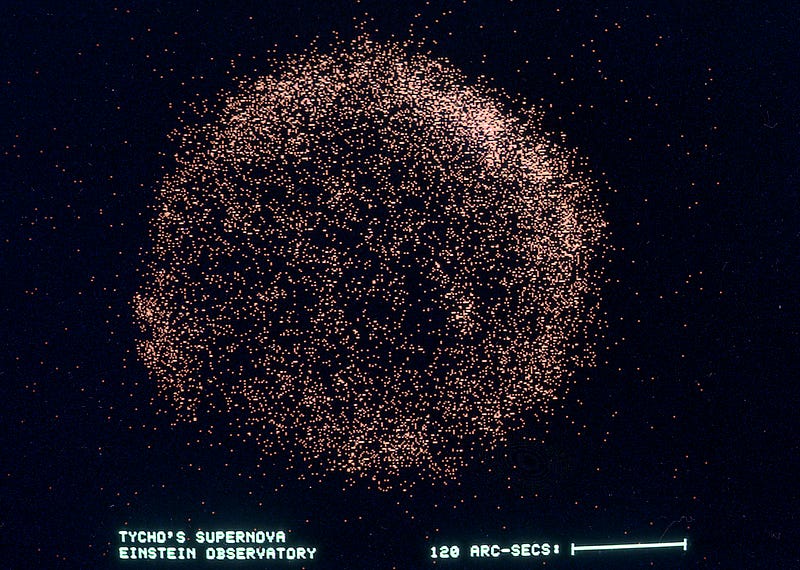
This was no core-collapse (or Type II) supernova; this was a Type Ia, where a white dwarf star accrued enough mass that its degenerate core became unable to press back against the force of gravity, began to collapse, and initiated a runaway fusion reaction that destroyed the entire star! There’s no collapsed object at the center, just high-energy material strewn about through the surrounding space.
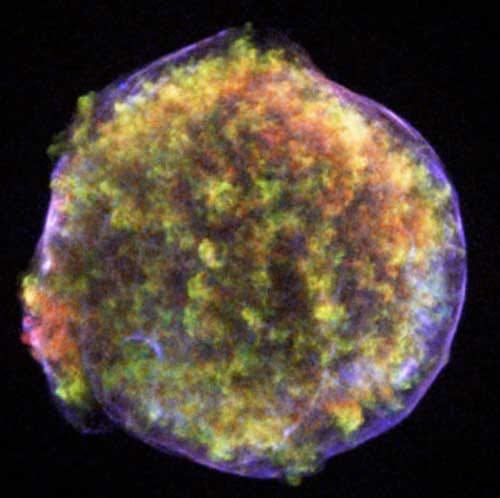
X-ray imaging exposes this high-temperature gas, and spectroscopic imaging confirms for us what we suspect about objects such as this: the strong presence of heavy elements!

Even the highest energy radiation in the Universe — the gamma rays — get in on the action, and continue to shine brightly more than 400 years later.

But white dwarf stars don’t just “go supernova” on their own; they’d be eternally stable unless something were happening to increase their mass over time. There could have been a companion star to the one that went supernova in 1572, one that had mass siphoned from it onto the onetime white dwarf. Finding the center of the explosion was a challenge, but we have, in fact, been able to locate exactly where it took place.
Want to know if anything’s there?

A G-class star — the same class as our own — is still there. Hundreds of years ago, this star was probably having mass siphoned off of it and onto its denser companion, when finally enough mass was accrued that the white dwarf became unstable, and a supernova ensued!
The star has moved by 2.6″ (or about one-1,500th of a degree) since the 1572 explosion, and is moving at a colossal 136 km/s relative to us, some three times the speed of all the other stars in its neighborhood. This star, more than any other, was given a boost (or a kick, if you prefer) by its onetime companion.
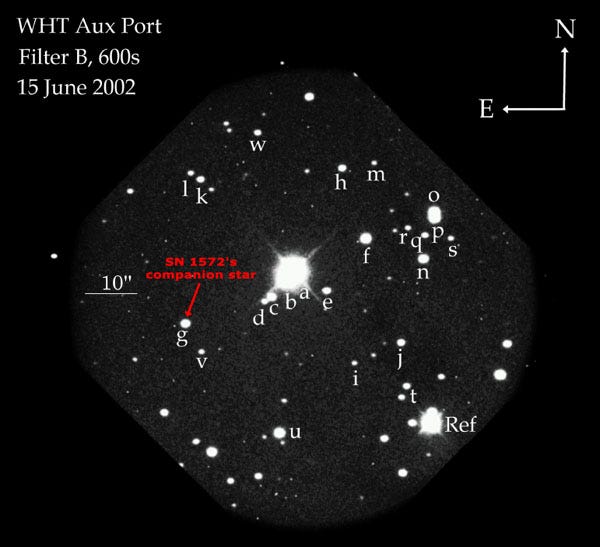
What remains now from that spectacular explosion is an expanding sphere of heavy elements, gas and dust, and a legacy that changed our understanding of the Universe forever.
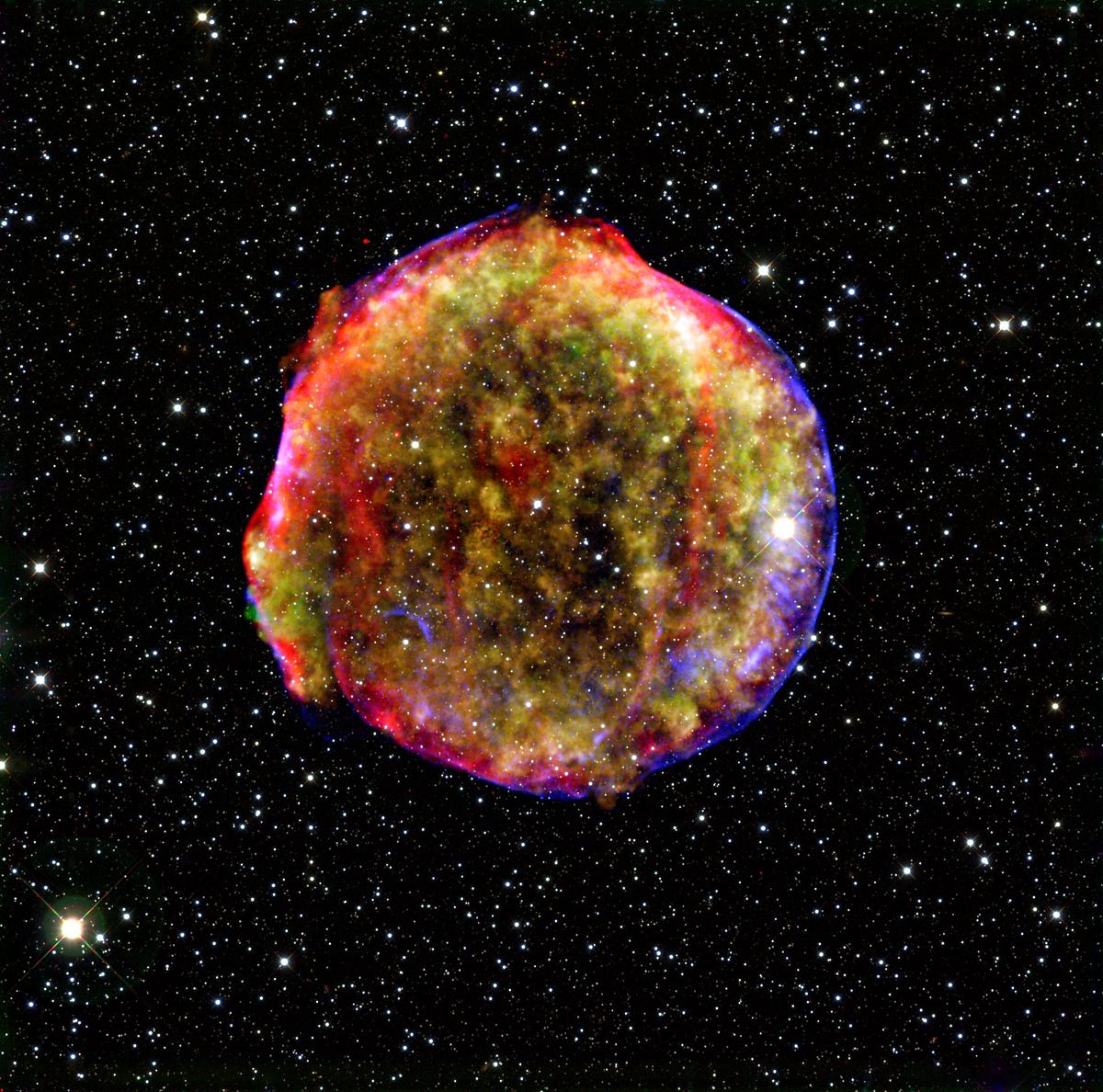
In another few thousand years, all signs of an explosion will become invisible at all wavelengths, and eventually a fraction of these elements strewn into the Universe will make their way into future generations of stars and planets.
But that doesn’t mean we’ll never see the evidence from this star again!
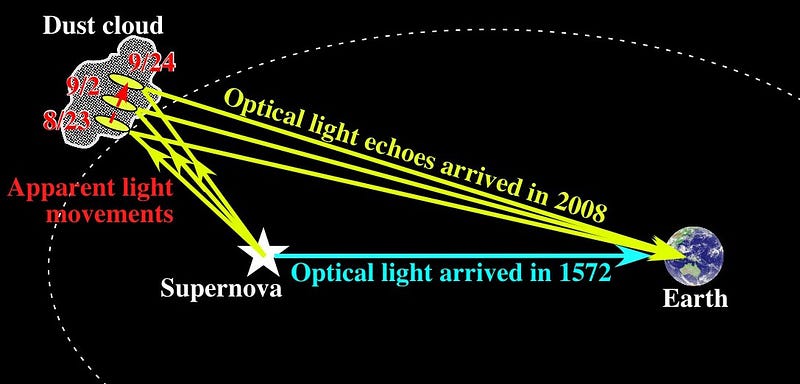
You see, the light from that spectacular explosion moved spherically outwards, and in a few places in the surrounding interstellar medium, reflects off the gas-and-dust that’s found in space. And these “light echoes” occasionally make their way to Earth, allowing us to observe the supernova over and over again, so long as there’s enough dust at the right distance and angle to send it our way.
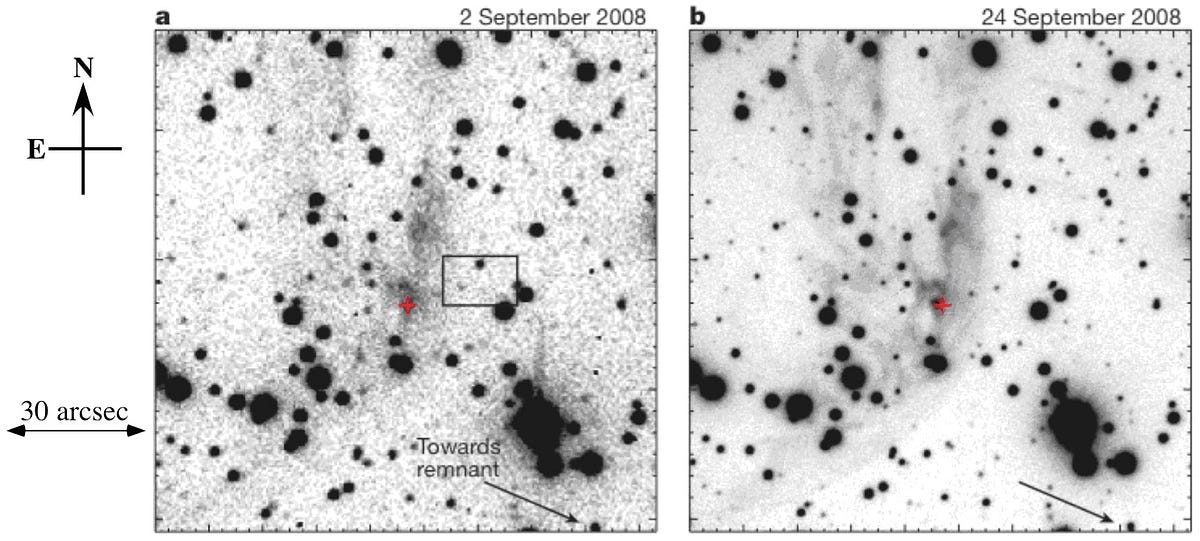
There have been — and will be — others, both in and beyond our galaxy since then, but if not for the supernova of 1572 (and a little later, the last naked-eye one, in 1604), it could have been a long, long time before the heavens held enough interest for us to look as deeply as we have.
Lucky us, for the Universe has been this way for all of human history, but on this night in 1572, our understanding of it began to change forever.
An earlier version of this post originally appeared on the old Starts With A Bang blog at Scienceblogs.





